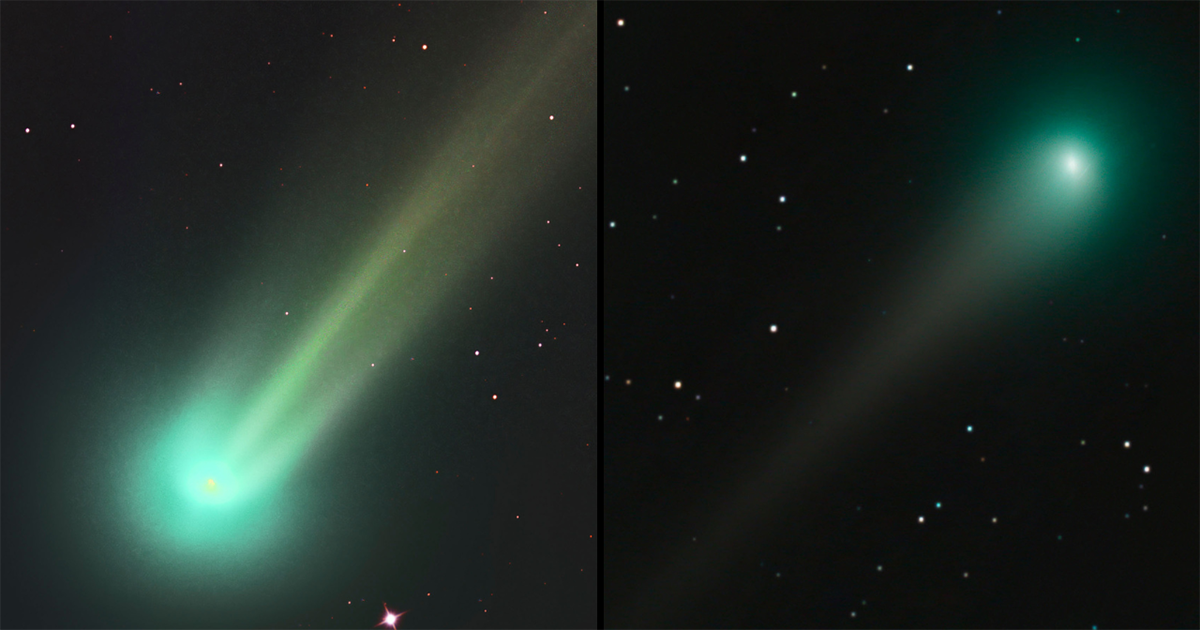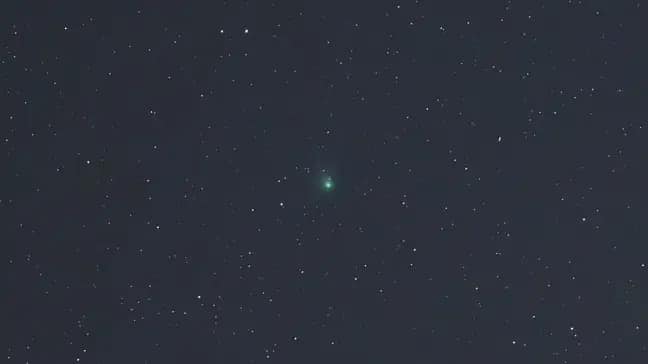People on Earth will see a green comet for the first time in 50,000 years.
Comets are like snowballs in space. They circle the Sun and are made up of frozen gases, rocks, and dust.
These old things are left over from when the sun and planets came together more than 4 billion years ago. Their long, flowing tails are what most people know them for.
If the sky stays clear as described above, you will be able to see the green comet called C/2022 E3 with your own eyes.
Learn more about the green comet in the video down below.
The last time the green comet went by Earth was during the last Ice Age. It won’t be seen again for another 50,000 years when it will restart its orbit around the sun and come back around to our planet.
It was found in March 2022, when it passed through Jupiter’s orbit for the first time.
Comet E3 will get within 26 million miles (42 million kilometers) of Earth at its closest point. It has moved about 4.5 trillion kilometers over the past 50,000 years. At the point where it is closest to Earth, comet E3 will be this far away.
It is best to go somewhere with as little light pollution as possible so that you have the best chance of seeing the once-in-a-lifetime event well.
On February 2, around 4 a.m. GMT in the UK or 3 p.m. ACT in Australia, people will have the best chance to see the comet.
On February 1, it can be seen at 11 p.m. Eastern Standard Time, 10 p.m. Central Standard Time, and 8 p.m. Pacific Standard Time (PST) for people in the U.S.
The Royal Observatory says that you should give your eyes 15 minutes to get used to the dark so that they can see better in the dark. This will help you see better at night.
But they also say that you shouldn’t use your phone at this time. If you have to, though, you should make sure that the red night vision mode in the app is turned on first.
Here is what Dr. Robert Massey, who is the Royal Astronomical Society’s deputy executive director said:
If you’re lucky, you’ll see a hint of the tail coming off it, so it’ll look more like a classic comet.
In an interview with the Boston Globe, one of the researchers who found the comet, Bryce Bolin, said that he thinks the comet will look like a cloud of white light in the sky just to the north of the Little Dipper constellation.
He explains:
Comets are the cats of the solar system; they do whatever they want.
Like cats they have fluffiness. Comets have been observed to have peculiar behaviours, like fragmenting or disintegrating.
But there is not really a strong correlation between the distance to the sun and the kind of disintegration events that occur.
It could break apart on its way in before it ever comes close to the sun, or even after.
He also said that “secretly,” he hopes it will fall apart because “that’s where the most interesting science is.”
Here’s my first effort at capturing the “Green Comet”, Comet c/2022 E3 (ZTF). This was a particular challenge due to humid conditions and clouds, but I’m thrilled I was able to capture it at all! pic.twitter.com/t2VGEnfKX8
— Andrew McCarthy (@AJamesMcCarthy) January 19, 2023
Because of how the molecules that form up comet E3 react when they are hit by sunlight, it is often called the “green comet.” This is because the center of the comet is surrounded by a brilliant green glow.
The green comet was found for the first time in March 2022 at the Zwicky Transient Facility in California. This is why the acronym ZTF is part of the name of the comet.
It made its first pass by Earth on January 12, and since then, it has been getting closer and closer.










